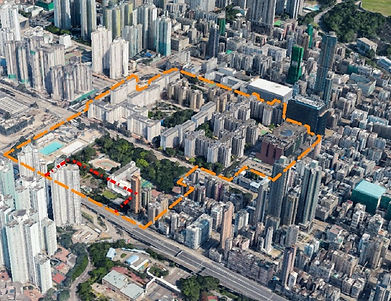深水埗軍營
1979-1981, 1986-1989
Open
9800 Refugees
Shum Shui Po Camp was a British Army camp built in the 1920s. It comprised of Hankow Barracks and Nanking Barracks with a large parade ground in the middle. It gained international notoriety as a POW camp of British, Indian and Canadian soldiers during the Japanese occupation of Hong Kong (1941-1945). The camp remained as a British Army Camp until 1977, and plans were made to redeveloped the site as public housing, due to the population boom in the area.90 However, it was turned into a refugee camp in 1979-1981. In 1984, part of the camp was turned
temporarily into a care home due to shortage of care facilities in Hong Kong.91 In 1985, when Mother Teresa visited Hong Kong, the Hong Kong
government leased one of the barrack buildings (no.291, 480 sq.m) for $1HKD to Canossian Mission as a homeless shelter. There was also a
proposal to turn a nearby barrack building (no.292) into a “permanent” church. However, there was no further discussion on this plan after Mother
Teresa left. Part of the Shum Shui Po north of Lai Chi Kok Road were demolished in the mid-1980s, and the part on the southern part were redeveloped in 1990.93 The east part of the site has also been redeveloped as a shopping mall (Dragon Centre), which is known for having an indoor roller coaster. There are two plaques in the Shum Shui Po Park commemorating WWII soldiers, one dedicated to Canadian soldiers.
However, those plaques are not accessible at the time of writing (2022) due to construction works in the park.
Shum Shui Po Camp


Aerial photo of the Shum Shui Po Camp, N.D. (CSD Museum)
Photo of refugees in Shum Shui Po camp, circa 1988.


Photo of Shumshuipo Camp in 1927 and Photo taken from the open ground between Nanking and Hankow camp before WWII. (UK National Army Collection) .

Map overlap of Shum Shui Po Camp and Jubilee Buildings with current conditions.

